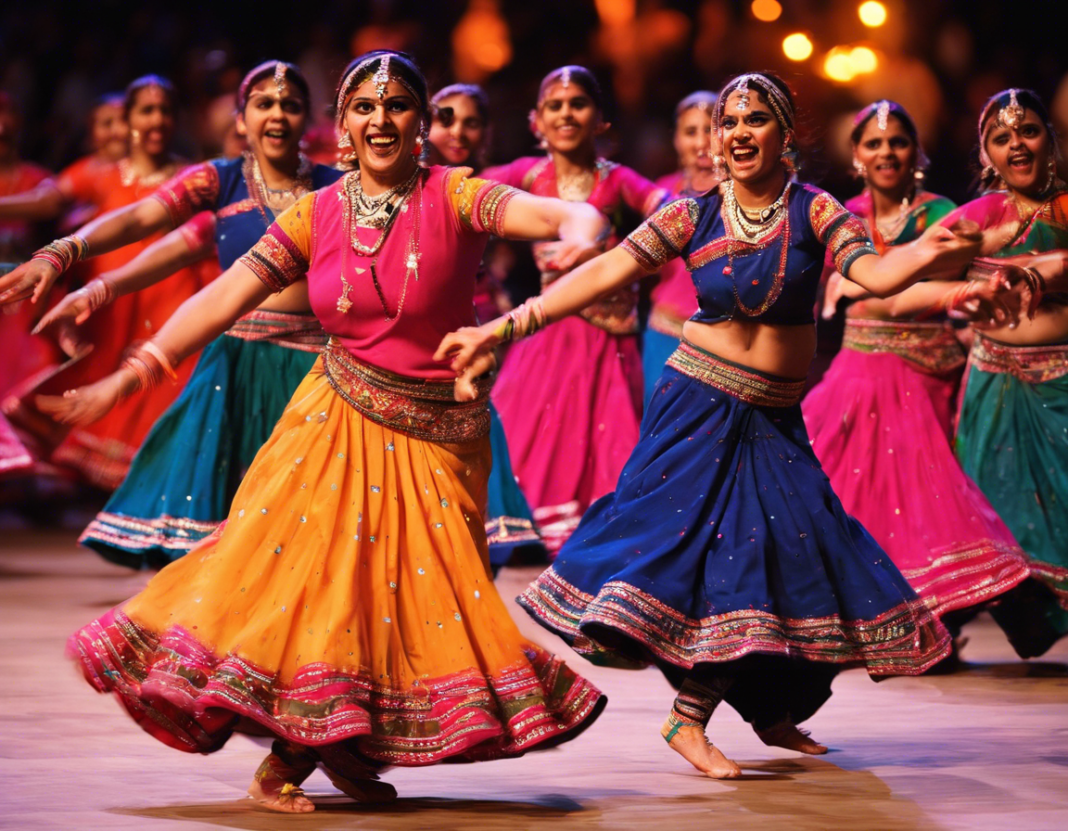Introduction
Gujarat, a vibrant state in western India, is renowned for its rich cultural heritage. One of the most celebrated cultural practices in Gujarat is the traditional dance form known as Garba. This folk dance has deep-rooted cultural significance and has been practiced for centuries, especially during the Navratri festival. In recent years, Garba has gained global recognition, and in 2016 it was inscribed on the UNESCO Representative List of the Intangible Cultural Heritage of Humanity. Let’s delve deeper into the world of Gujarat’s Garba dance and explore the reasons behind its UNESCO heritage status.
History and Origins
Garba is a traditional dance form that originated in the state of Gujarat and is primarily associated with the worship of the goddess Shakti during the Navratri festival. The dance is characterized by circular and rhythmic movements performed by women gracefully moving in concentric circles around a clay lamp known as the “garba” or “deep.” The dancers clap their hands or use small sticks called “dandiyas” to accompany the music.
The origins of Garba can be traced back to the celestial dance of the Hindu goddess Durga or Shakti. The dance form is believed to embody the spirit of devotion, joy, and community bonding. Over the centuries, Garba has evolved and incorporated elements of different dance styles, music, and costumes, reflecting the cultural diversity of Gujarat.
Cultural Significance
Garba holds immense cultural significance in Gujarat, serving as a symbol of unity, devotion, and celebration. During the nine nights of Navratri, communities across Gujarat come together to perform Garba as a form of worship and celebration. The dance is not just a physical activity but a spiritual experience that fosters a sense of togetherness and harmony among participants.
The colorful costumes, vibrant music, and energetic dance movements of Garba create a festive atmosphere that transcends age, gender, and social boundaries. It is a way for people to connect with their cultural roots, express their creativity, and pay homage to the divine feminine energy embodied by the goddess Durga.
UNESCO Heritage Status
In 2016, Gujarat’s Garba dance secured a coveted spot on the UNESCO Representative List of the Intangible Cultural Heritage of Humanity. This recognition was a testament to Garba’s cultural significance, artistic value, and contribution to promoting social cohesion and diversity.
UNESCO praised Garba for its role in fostering a sense of unity and inclusiveness among communities, promoting cultural exchange, and preserving traditional knowledge and skills. The inscription also highlighted the importance of safeguarding and promoting intangible cultural heritage as a means of ensuring cultural continuity and diversity in the face of globalization.
Impact and Global Reach
The UNESCO heritage status has significantly elevated the profile of Gujarat’s Garba dance on the international stage. It has opened up opportunities for cultural exchange, collaboration, and promotion of Garba as a unique art form that transcends borders and barriers.
Garba is now celebrated not only in Gujarat but also in other parts of India and across the world. International festivals, workshops, and performances showcasing Garba have helped raise awareness about this traditional dance form and its cultural significance. It has become a symbol of India’s rich cultural heritage and a medium for promoting intercultural dialogue and understanding.
Preservation and Promotion Efforts
In light of its UNESCO heritage status, efforts are being made to safeguard and promote Gujarat’s Garba dance for future generations. Various initiatives such as cultural education programs, workshops, and performances have been organized to ensure the continuity and vitality of Garba as an intangible cultural heritage.
Local communities, cultural organizations, and government agencies are working together to document, archive, and transmit the knowledge, skills, and traditions associated with Garba. This includes training new generations of dancers, musicians, and artisans, as well as promoting research and documentation of Garba’s history and cultural significance.
Conclusion
Gujarat’s Garba dance is not just a form of artistic expression but a living heritage that embodies the spirit of unity, devotion, and celebration. Its UNESCO heritage status has brought global recognition to this traditional dance form and underscored its cultural significance and value. As we celebrate the colorful rhythms and movements of Garba, let us also recognize the importance of preserving, promoting, and passing on this rich cultural legacy to future generations.
FAQs:
1. What is the significance of Garba in Gujarati culture?
Garba is a symbol of unity, devotion, and celebration in Gujarati culture, particularly during the Navratri festival. It fosters a sense of togetherness, community bonding, and spiritual connection among participants.
2. How is Garba performed?
Garba is performed in circular formations with rhythmic movements and clapping of hands or dandiyas to accompany the music. Dancers move gracefully in sync with the beats and melodies, creating a vibrant and energetic atmosphere.
3. What led to Garba’s inscription on the UNESCO heritage list?
Garba’s inscription on the UNESCO heritage list was due to its cultural significance, artistic value, and contribution to promoting social cohesion and diversity. It was recognized for its role in fostering unity, inclusiveness, and preserving intangible cultural heritage.
4. How has Garba’s UNESCO status impacted its global reach?
Garba’s UNESCO status has elevated its profile on the international stage, leading to increased awareness, participation, and celebration of this traditional dance form worldwide. It has become a symbol of India’s cultural heritage and a platform for cultural exchange and dialogue.
5. What efforts are being made to preserve and promote Gujarat’s Garba dance?
Various initiatives, including cultural education programs, workshops, and performances, are being undertaken to safeguard and promote Garba for future generations. These efforts focus on training new artists, documenting heritage, and promoting cultural exchange to ensure Garba’s continuity and vitality.

